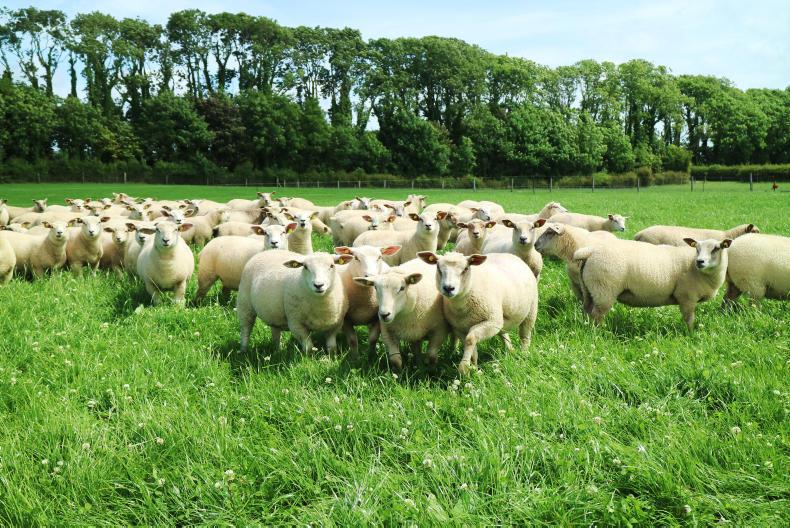There is potential for well-run sheep enterprises to deliver a gross margin per hectare in excess of €900/ha and a net margin per hectare in the region of €500/ha.
This performance has been consistently achieved over the last five years in the high-prolificacy, high-stocking rate systems operated in the research demonstration flocks in Teagasc Athenry.
The trial, guided by researcher Philip Creighton, shows that for the last two years the system running 12 ewes/ha at high prolificacy (weaning 1.7 to 1.8 lambs) achieved a gross margin of €904/ha, while the high-prolificacy 14 ewes/ha system returned a gross margin of €973/ha.
Despite the performance of the higher stocking rate trial, Creighton says that the high-prolificacy, 12 ewes/ha group is a better bet in the longer term to achieve a more consistent return as it realises less of a risk of falling foul to higher weather-related or input costs.
The analysis is also starting to take a deeper look into the level of labour required to operate the varying systems.
Initial findings show that there is an average labour requirement of 7.94 hours/ewe/year for a 60-ewe lowland flock, similar to that run in Athenry, with just 15 minutes/ewe extra required for high-prolificacy breeds.
The labour requirement per ewe reduces as flock size grows, with 5.3 hours/ewe required for a 150-ewe flock (113.5 working days) and 3.92 hours/ewe for a 380-ewe flock.
These findings and how they can be achieved will be discussed in detail at a major technical information event for sheep farmers taking place next Wednesday, 21 June, at Teagasc Mellows Campus, Athenry.
The latest results from the Ireland and New Zealand Across Country (INZAC) trial, which is comparing the performance of elite New Zealand Suffolk and Texel ewes with elite five-star Irish Suffolk and Texel ewes and low-genetic merit one-star Irish Suffolk and Texel ewes will also be unveiled.
The event runs from 11am to 5pm.
There is potential for well-run sheep enterprises to deliver a gross margin per hectare in excess of €900/ha and a net margin per hectare in the region of €500/ha.
This performance has been consistently achieved over the last five years in the high-prolificacy, high-stocking rate systems operated in the research demonstration flocks in Teagasc Athenry.
The trial, guided by researcher Philip Creighton, shows that for the last two years the system running 12 ewes/ha at high prolificacy (weaning 1.7 to 1.8 lambs) achieved a gross margin of €904/ha, while the high-prolificacy 14 ewes/ha system returned a gross margin of €973/ha.
Despite the performance of the higher stocking rate trial, Creighton says that the high-prolificacy, 12 ewes/ha group is a better bet in the longer term to achieve a more consistent return as it realises less of a risk of falling foul to higher weather-related or input costs.
The analysis is also starting to take a deeper look into the level of labour required to operate the varying systems.
Initial findings show that there is an average labour requirement of 7.94 hours/ewe/year for a 60-ewe lowland flock, similar to that run in Athenry, with just 15 minutes/ewe extra required for high-prolificacy breeds.
The labour requirement per ewe reduces as flock size grows, with 5.3 hours/ewe required for a 150-ewe flock (113.5 working days) and 3.92 hours/ewe for a 380-ewe flock.
These findings and how they can be achieved will be discussed in detail at a major technical information event for sheep farmers taking place next Wednesday, 21 June, at Teagasc Mellows Campus, Athenry.
The latest results from the Ireland and New Zealand Across Country (INZAC) trial, which is comparing the performance of elite New Zealand Suffolk and Texel ewes with elite five-star Irish Suffolk and Texel ewes and low-genetic merit one-star Irish Suffolk and Texel ewes will also be unveiled.
The event runs from 11am to 5pm.






 This is a subscriber-only article
This is a subscriber-only article





SHARING OPTIONS: